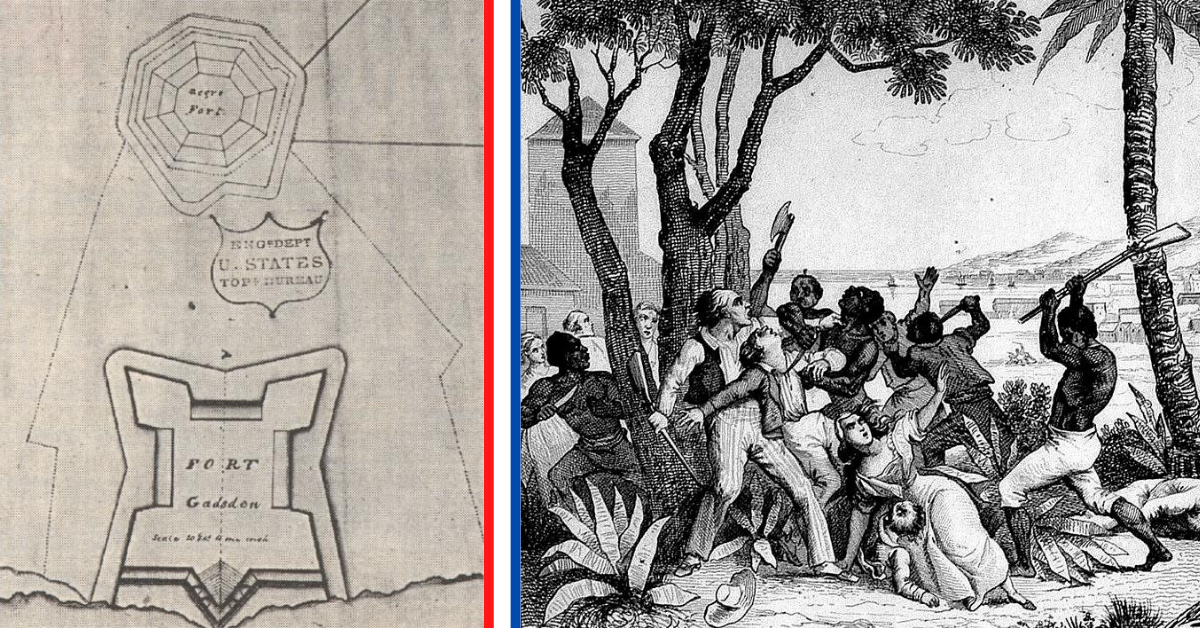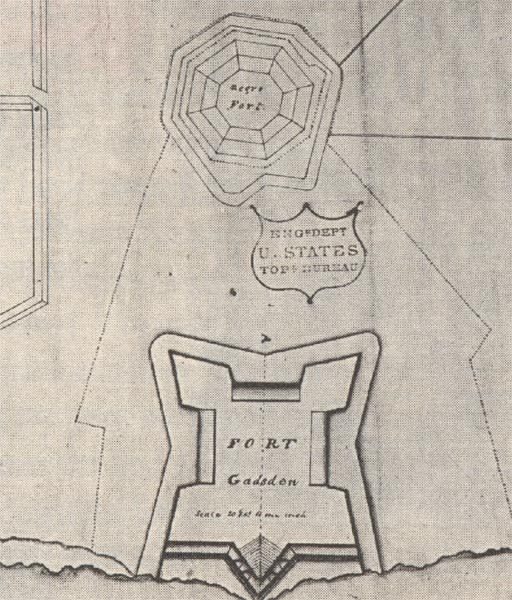The tragic story of the Battle of Negro Fort

- Oops!Something went wrong.Please try again later.
Out of the ashes of the War of 1812, a thriving community emerged in Spanish-held Florida of Black people who escaped slavery and Seminole families. But an army led by Maj. Gen. Andrew Jackson destroyed it in minutes with a lucky shot, ending the community and leading to the Seminole Wars.
Negro Fort after the War of 1812
When Britain lost the War of 1812, it intentionally left some of its former forts intact for its Native American allies to use. This included a fortification on the Apalachicola River that became known as "Negro Fort." It sat on the site that would later become Fort Gadsden. British forces constructed the fort to control traffic on the river and to provide a base of operations for naval forces attacking north into Louisiana.
After Britain's withdrawal, a detachment of the Corps of Colonial Marines moved in and settled. The Corps of Colonial Marines contained formerly enslaved Black people, freed of slavery during the war and of their military obligation after it. The Black settlement quickly became a beacon of hope for people escaping slavery since fugitives in Georgia and nearby slave states could make it south to Spanish territory much faster than north to Canada.
Formerly enslaved people and some Native Americans set up farms on the river near the fort. They traded with local tribes for supplies they couldn't make themselves.
The protest of American slavers
Of course, American slaveowners did not enjoy having an armed community of escaped Blacks serving as a beacon of hope for their own forced workers. Hundreds of men and women, whether freed legally in the eyes of American law or escaped from their slavers, migrated to the formerly tiny fort.
Georgia plantation owners lobbied the federal government for action against the fort, even though it was in Spanish territory. Army Col. Robert Patterson pushed for an assault on the fort saying, "The service rendered by the destruction of the fort, and the band of negroes who held it is one of great and manifest importance to the United States and particularly those States bordering on the Creek Nation, as it had become the rendezvous for runaway slaves."
The fort and surrounding area became home to over 1,000 escaped Blacks. Maj. Gen. Andrew Jackson, the then-hero of New Orleans and future president, launched a campaign to eliminate Negro Fort.

The campaign against Negro Fort
Jackson started by building a new base of operations at a nearby junction of the Flint and Chattahoochee rivers. He turned the former Camp Crawford into Fort Scott, but this required ships headed to Fort Scott to pass Negro Fort.
Most of Jackson's ships and supplies passed without incident, but one shipment did not. Two gunboats carrying supplies stopped near the fort to refill their canteens, and infantry at Negro Fort opened fire on the boats, killing nearly all the Americans onboard. The fight became known as the Watering Party Massacre.
Jackson related the incident to the Spanish governor and got permission to destroy Negro Fort.
The Black veterans were unfamiliar with artillery weapons and tactics, and most of their cannon shots went wide. But the American gunners on ships were significantly better and quickly began lobbing "hot shot" into the fort.
These superheated shells caused fires when they struck wooden structures. But within minutes, one round of hot shot made it into the fort's powder magazine.
In an instant, the battle was over. The massive explosion nearly leveled the fort and killed almost all of the defenders. A Black man named Garson had acted as fort commander. He and the Choctaw chief were handed over to the Creek allies who executed both and scalped the Choctaw leader.
The other survivors were forced back into slavery.
After the battle
America soon built Fort Gadsden on the former site of Negro Fort.
The Battle of Negro Fort is sometimes called the first battle of the First Seminole War or else is seen as a precursor to the war. Either way, Jackson's campaign against the Seminole included using U.S. forces to attack Seminole bands as he hunted Blacks who had escaped slavery. He later captured Pensacola and St. Marks.
His conquest of the lightly occupied Spanish territory helped lead to it being ceded by Spain to America in the Treaty of Adams-Onis in 1819 and the Transcontinental Treaty in 1821.

